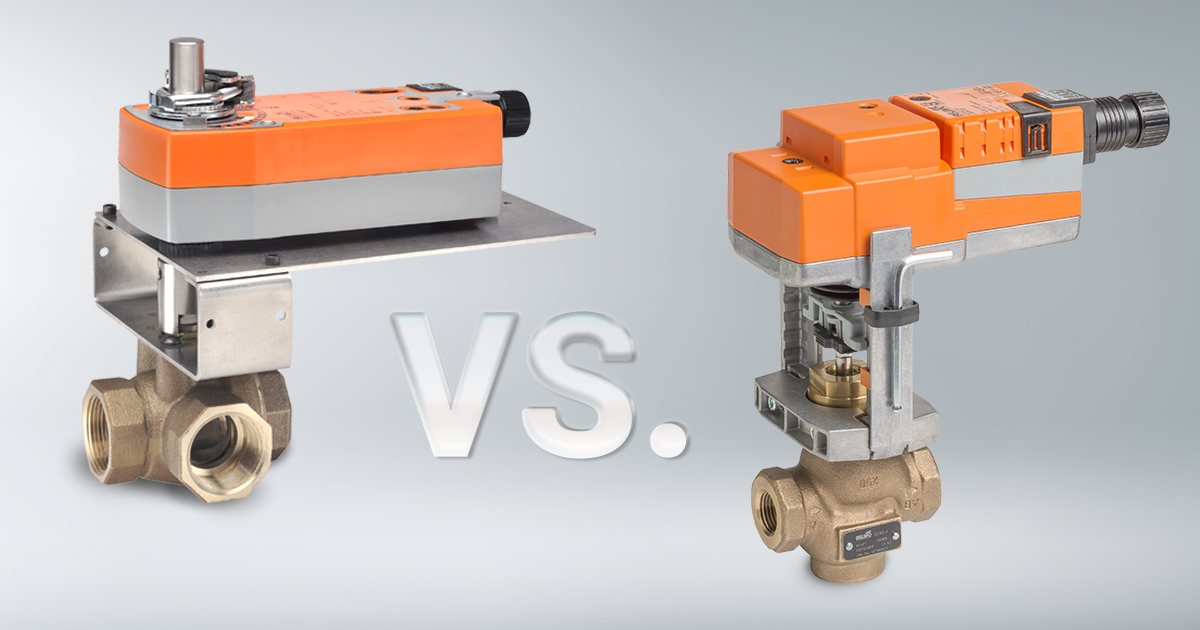Ball Valves vs. Globe Valves: What’s the Difference?
Picking the right components can make a significant difference in how well an HVAC system runs. Among these components, Globe Valves and Ball Valves often play a key role. Globe Valves are especially useful when precise flow control is required, whereas Ball Valves are ideally suited for applications requiring quick opening and tight close-off. In this blog, we'll break down the differences between these two valves, how they work, and where they’re commonly found in HVAC systems.
Ball Valves

A Ball Valve controls the flow of fluid using a rotary ball with a hole running through the center. When the valve is open, the hole is aligned with the pipeline, which allows the flow to pass. When it's closed, the hole is perpendicular to the flow, stopping the passage of fluid. A Ball Valve uses the rotation of the ball (increasing and decreasing its opening) to control the flow.
Most of the time, Ball Valves are used for chilled or hot water with up to 60% glycol concentration. They can be used for water-side control of air handling units in ventilation and air-conditioning systems, and water/steam control in heating systems.
Belimo offers a full line of industrial 2-way & 3-way Ball Valves that are available with non-spring return, spring return or electronic fail-safe actuators offering high close-off capabilities. The actuators operate using a standard voltage, allowing for on/off, modulating, or floating-point control, which moves the valve to the position specified by the control system.
Ball Valves such as the Belimo QCV and PIQCV are specially designed zone valves that are known for their reliability, cost-effectiveness, and easy installation. The Belimo CCV integrates the robust close-off functions of a Ball Valve with a specialized disc, ensuring an equal percentage flow characteristic for consistently accurate flow control. Less expensive Ball Valves are a common choice for shut-off valves due their ability to provide a quick and tight seal with a low pressure drop.
Globe Valves

A Globe Valve is comprised of a linear travel plug which fits into a seat enclosed within a spherical body, which is where it gets its name. The flow is adjusted by moving the plug up or down, in proximity to the seat. When fully closed, the plug seals off the flow. Globe Valves are used in HVAC systems to regulate, throttle, or isolate flow. They are especially useful when precise flow control is needed, such as in hot water heating systems, steam systems, or in chillers where modulating flow is important for system performance.
Belimo offers Globe Valves in a range of sizes from ½” to 6”, which meet both ANSI 125 and ANSI 250 standards. They are available with bronze or stainless-steel trim options and can be equipped with spring return, non-spring return, or electronic fail-safe actuators. Belimo Globe Valves are ideally suited for HVAC devices, including air handling units, terminal equipment, and hydronic systems operating in primary and secondary loops for water or steam service.
The choice between a Globe Valve and a Ball Valve depends on the specific needs of the application, but in general, for precise flow control, a Globe Valve is preferable, while for on/off operations or where a minimal pressure drop is desired, a Ball Valve is more suitable. Also, Globe Valves can be more expensive than Ball Valves, which too is a consideration.
Are you looking for HVAC training? Belimo offers unlimited access to a library of high-quality, current, and engaging HVAC video tutorials from industry experts.

